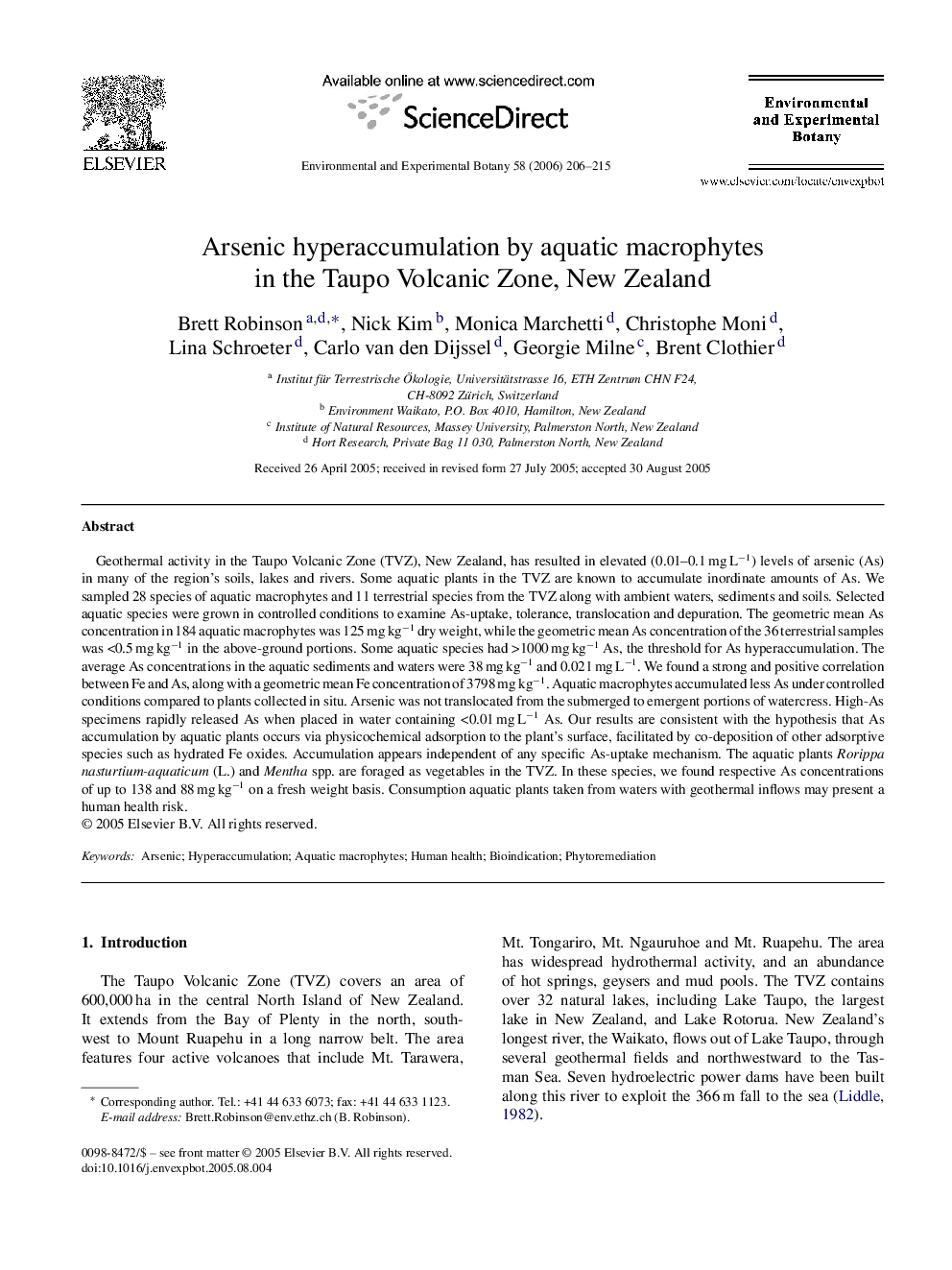| کد مقاله | کد نشریه | سال انتشار | مقاله انگلیسی | نسخه تمام متن |
|---|---|---|---|---|
| 4555660 | 1628109 | 2006 | 10 صفحه PDF | دانلود رایگان |

Geothermal activity in the Taupo Volcanic Zone (TVZ), New Zealand, has resulted in elevated (0.01–0.1 mg L−1) levels of arsenic (As) in many of the region's soils, lakes and rivers. Some aquatic plants in the TVZ are known to accumulate inordinate amounts of As. We sampled 28 species of aquatic macrophytes and 11 terrestrial species from the TVZ along with ambient waters, sediments and soils. Selected aquatic species were grown in controlled conditions to examine As-uptake, tolerance, translocation and depuration. The geometric mean As concentration in 184 aquatic macrophytes was 125 mg kg−1 dry weight, while the geometric mean As concentration of the 36 terrestrial samples was <0.5 mg kg−1 in the above-ground portions. Some aquatic species had >1000 mg kg−1 As, the threshold for As hyperaccumulation. The average As concentrations in the aquatic sediments and waters were 38 mg kg−1 and 0.021 mg L−1. We found a strong and positive correlation between Fe and As, along with a geometric mean Fe concentration of 3798 mg kg−1. Aquatic macrophytes accumulated less As under controlled conditions compared to plants collected in situ. Arsenic was not translocated from the submerged to emergent portions of watercress. High-As specimens rapidly released As when placed in water containing <0.01 mg L−1 As. Our results are consistent with the hypothesis that As accumulation by aquatic plants occurs via physicochemical adsorption to the plant's surface, facilitated by co-deposition of other adsorptive species such as hydrated Fe oxides. Accumulation appears independent of any specific As-uptake mechanism. The aquatic plants Rorippa nasturtium-aquaticum (L.) and Mentha spp. are foraged as vegetables in the TVZ. In these species, we found respective As concentrations of up to 138 and 88 mg kg−1 on a fresh weight basis. Consumption aquatic plants taken from waters with geothermal inflows may present a human health risk.
Journal: Environmental and Experimental Botany - Volume 58, Issues 1–3, December 2006, Pages 206–215